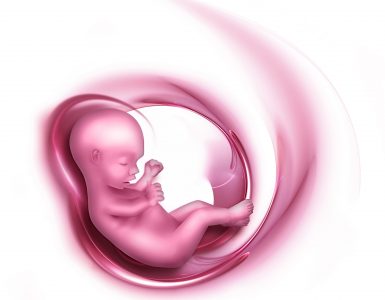“Anything [with its testes] bruised or crushed or torn or cut you shall not offer to Hashem, and in your land you shall not do [this]” (Vayikra 22:24)
One of the most common methods of permanent contraception for women is tubal ligation, a surgical procedure in which the fallopian tubes are blocked, cut, or tied to prevent the egg from traveling from the ovaries to the uterus and sperm from reaching the egg, thus preventing fertilization. Tubal ligation can be performed through open surgery, laparoscopy, or at the time of a cesarean section.
Tubal ligation is usually considered a permanent form of contraception and is not easily reversible, requiring women who change their minds and desire to become pregnant to undergo in vitro fertilization (IVF). However, in some cases, it may be possible to surgically restore the fallopian tubes if they were previously ligated with certain methods, such as titanium clips.
The Torah explicitly forbids castration, as stated in the Posuk “And in your land you shall not do [this]” (Vayikra 22:24) and interpreted by the Gemara (Shabbos 110b). The definition of castration is “destruction of the reproductive organs” as outlined by the Rambam (Hilchos Isurei Bi’ah 16) and Shulchan Aruch (E.H. 5).
“Destruction of the reproductive organs” refers to damage that is both significant and permanent. Therefore, methods of contraception that do not cause significant harm or are temporary are not included in the Torah prohibition.
In this essay, we will begin with an analysis of the prohibition of castration as it applies to women. We will then consider whether there is room for leniency when pregnancy could be life-threatening.
The next essay will address related Halachic questions. For instance, is it permissible to perform a tubal ligation that is permanent unless it is reversed through corrective surgery (e.g., removing titanium clips and reattaching intact sections of the fallopian tubes)? Furthermore, perhaps the present-day possibility of conceiving through IVF following all forms of tubal ligation means that it is never prohibited to undergo this procedure.
The fundamental question is whether it is equally forbidden to castrate males and females. The Gemara (Shabbos 110b) derives the Torah prohibition of castration from a Posuk in our Parsha describing injuries to the male reproductive anatomy. Does this prohibition extend to sterilizing a woman? The Shulchan Aruch rules (ibid., 3): “One who sterilizes a female, whether human or other species, is exempt, but it is forbidden to do so“. Further in that same Siman (Se’if 12), he adds: “A woman may drink a sterilizing solution to sterilize herself so that she will not give birth [in the future].“
The simple interpretation of the term, “one is exempt, but it is forbidden“, is that female sterilization is only prohibited mid’Rabbanan.[1] Although the Chachamim derived that female sterilization is also forbidden from the following Posuk (Vayikra 22:25, with Sifri Emor 7:7), “For their defect is in them, there is a blemish in them“, the Shulchan Aruch follows R’ Yehuda who understood that the term “in them” excludes females from the prohibition.
In fact, while the Gra in his commentary to the Shulchan Aruch (ibid.) rules that the Halacha follows the Chachamim, the majority of Poskim rule that female sterilization is only prohibited mid’Rabbanan (Maggid Mishna, Hilchos Isurei Bi’ah, 16:11), presumably as Halacha follows R’ Yehuda’s position.
Furthermore, the majority of Poskim (E.H. 5:12) accept the Maggid Mishna’s distinction between prohibited castration and permitted drinking of a sterilizing solution. He explains that only surgical sterilization is prohibited as it involves direct contact with the female reproductive anatomy. (The Taz makes a similar distinction but takes the position that female sterilization is not related to the prohibition of castration; it is related to the prohibition of self-harm. Therefore, he understands that only surgical sterilization is forbidden, due to the pain associated with the procedure.) The Bach (ibid.), on the other hand, holds that the method of sterilization is inconsequential. The distinction lies in the intent of the procedure: it is permissible for a woman to be sterilized for a justifiable reason, such as the prevention of future suffering. However, it is forbidden for a woman to be sterilized without good reason.
Regardless of which of the above positions one adopts, the Halacha is clear – it is generally forbidden to sterilize a woman by tying her fallopian tubes. This is the conclusion of the Poskim who dealt with this question (see Tzitz Eliezer 9:51:2).
Rav Shmuel Wosner zt”l (Shevet haLevi 9:265) discusses the following serious case:
In the case of a woman who nearly died after birth and was found to have a serious illness in her blood. She was saved by Hashem’s mercy and must take medicine for the rest of her life and may not become pregnant. One specialist doctor told her that after some time it may be possible for her to become pregnant, but in any event, she will require constant supervision, because he too admits that in all scenarios there is a real concern of danger, but that under the supervision of specialists in her condition, it is possible that the danger may pass and she will give birth.
Rav Wosner begins his response by making clear that under no circumstances was it permitted for this woman to become pregnant, even if would be closely monitored by specialists, and even if there was only an outside chance that she would lose her life. He then turns to the question of which method of birth control is Halachically acceptable. The doctors had recommended that the couple use a condom during intercourse as they deemed it unsafe for the woman to take oral contraceptives. However, Rav Wosner categorically rejects this option as it would result in violating the Torah prohibition of Hashchasas Zera (destroying or wasting sperm). He advised the woman to consult with her doctors to see whether they would deem the option of inserting two rings – an external ring and an internal ring – “through which the risk is reduced to almost zero”.[2] He adds that if the doctors would rule out this method as well, he recommends a hysterectomy or tubal ligation “which we permit in rare situations.”
What is his basis for permitting this?
- According to most Poskim, the prohibition of female sterilization is only mid’Rabbanan.
- Even if we must be concerned for the opinion of the Gra who considers this a Torah prohibition, this woman’s life would be endangered by pregnancy, and Pikuach Nefesh overrides Torah prohibitions.
- According to the Taz, the only reason for a woman not to sterilize herself is because of self-harm. That clearly would not apply in this scenario as this is a medical procedure to avoid life-threatening complications (just like all other forms of surgery are permitted even though they are painful and inflict injury).
Rav Wosner concludes that ideally the couple should “[abstain for] a few months so that we do not have to resort to Heterim until the abstinence becomes difficult, and if it will then become clear that this situation of potential danger remains, it will be permissible to allow her to be sterilized, but not to allow the alternative method. These words are self-explanatory, and it is obvious that one should not [extrapolate] from this to other situations because we are talking about an exceptional ruling, in a rare case and with great danger, and God forbid to compare one thing to another in this regard.”
In other words, Rav Wosner rules that it is forbidden to perform tubal ligation except in rare cases, and, even then, only on the personalized instruction and guidance of a qualified Posek. In his opinion, even if a woman’s doctor has advised her to avoid pregnancy and use contraception for the rest of her life, tubal ligation may be considered only as a last resort. Whenever it is possible to use contraceptive methods that do not involve sterilization, such as oral contraceptive pills, vaginal contraceptive rings, or IUDs, tubal ligation is forbidden. Since these other methods are usually feasible, Halacha almost always rules out tubal ligation.
Rav Wosner’s willingness to allow tubal ligation as a last resort when pregnancy could endanger a woman’s life requires explanation. After all, the woman’s life will only be endangered if she continues to have unprotected intercourse with her husband. If so, why do we not insist that they practice abstinence or divorce?
This question is addressed by the leading Poskim in several Teshuvos. The first Teshuva of the Igros Moshe, in which he rules stringently, appears to be well known. Less well known are his words in another Teshuva in which he clarifies his initial ruling and ultimately rules leniently.
In the first Teshuva (Igros Moshe E.H. 1:13), Rav Moshe deals with the case of a woman whose pregnancies cause three types of illness – psychological distress, kidney disease, and varicose veins. The woman was pregnant at the time and Rav Moshe was consulted for permission to surgically prevent the possibility of future pregnancy.
Rav Moshe cites the opinion of the Gra, who ruled that female sterilization is a Torah prohibition. He sides with the Gra, concluding that it is definitely forbidden to sterilize a woman unless her life would otherwise be endangered. He wrote further:
And even [according to] those who hold that it is only [Asur] mid’Rabbanan, it is also possible that one should not permit this without danger to life, as not all Rabbinic prohibitions are the same in being permitted in situations of great suffering and great need.
He concludes:
Therefore, although pregnancy for this woman should be considered a danger, there is no danger without pregnancy, and for the sake of danger she is able to refrain from intercourse, and in a case of danger she has no commitment to her husband, and therefore I do not see a Heter to sterilize her. However, since she has a concern of danger in pregnancy, she is permitted to have intercourse with the [diaphragm] that is placed in the woman’s body, as this is permitted by the Acharonim…”
From this Teshuva, it is apparent that Rav Moshe prohibited female sterilization even when pregnancy would endanger the woman’s life, and seemingly even when there is no viable alternative method of birth control. After all, the woman can exercise abstinence and thereby remain out of harm’s reach.
This ruling, written in 5716, attracted considerable attention due to its stringency: both in terms of Rav Moshe’s decision to rule like the Gra and in terms of the implications that this could have for women who were unable to avail themselves of other forms of contraception (such as in the aforementioned case of the Shevet haLevi).
However, in another Teshuva written in 5739, (E.H. 4:34), Rav Moshe ruled leniently. He explains his previous Teshuva, emphasizing that the reason he forbade sterilization was solely because the woman in question could make use of an alternative method of contraception. However, when there is no viable alternative solution, he too agrees that one may be lenient and undergo surgical sterilization.
He explains that requiring permanent abstinence would render a woman an Aguna – a woman who is indefinitely precluded from married life. She may not benefit from a full marriage with her present husband, and even if she would obtain a divorce, she would not be able to marry anyone else. Since we find that Chaza”l adopted many leniencies to ease the plight of an Aguna, this justifies adopting leniencies to assist a woman in this situation too. Consequently, since we find that Chaza”l were willing to permit activities that they had forbidden on Shabbos in the face of suffering and great need, there is no reason to assume that they would have ruled more stringently with their prohibition of female sterilization in this Aguna situation.
Moreover, in contrast to his earlier Teshuva, Rav Moshe cites all the Rishonim and Poskim who disagree with the Gra, making the case that there is no Torah prohibition against female sterilization. He further notes that all those Rishonim who did not voice an opinion on this subject can be presumed to have understood that female sterilization is only Asur mid’Rabbanan; had they disagreed they would surely have objected! Therefore, Rav Moshe concludes that although the Gra’s opinion carries great weight, we should give preference to the opinion of all the Rishonim over the Gra. Firstly, because they are his teachers too, and, secondly, out of consideration for the woman’s suffering. Regarding the grounds for stringency outlined in the earlier Teshuva, he clarified that they are only to be applied when there is a viable alternative method to prevent pregnancy.
As such, Rav Moshe’s ultimate ruling is consistent with the other Poskim who wrote that when there is no viable alternative method of contraception and pregnancy could be dangerous, a woman may undergo a tubal ligation.
In the next essay, we will discuss additional details of this Halacha.
[1] [Editor’s note: See Shabbos 107a where this term is used in the context of Issurei Shabbos.]
[2] [Editor’s note: It is not clear what R’ Wosner was referring to. If the “ring” is a vaginal contraceptive ring, it would likely have the same contraindications as oral contraceptive pills, and there is no “external” form of the ring. It seems that he is discussing a barrier method of contraception (i.e., diaphragm together with a cervical cap), but the term “ring” doesn’t really fit. In any case, the main point here is that he permitted tubal ligation in “rare situations”.]














Add comment